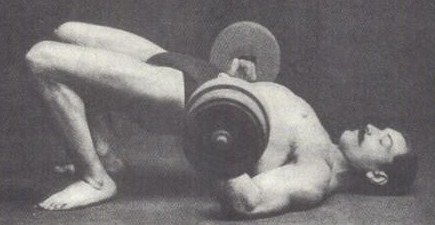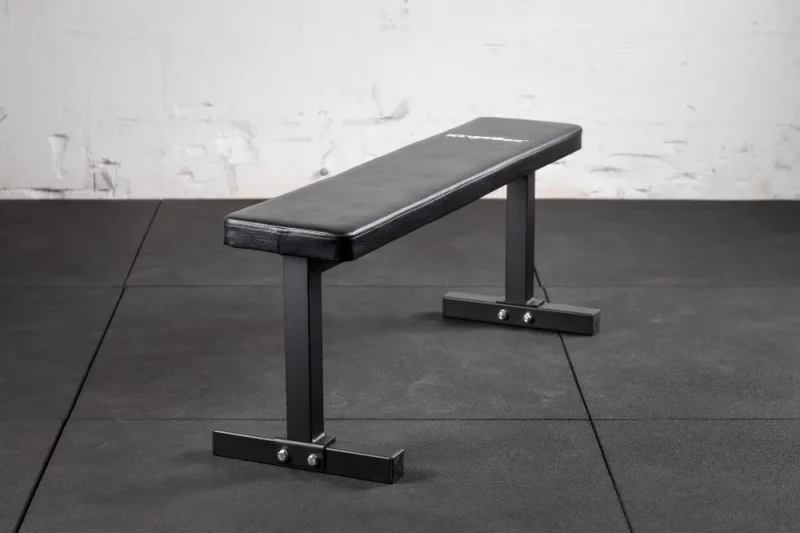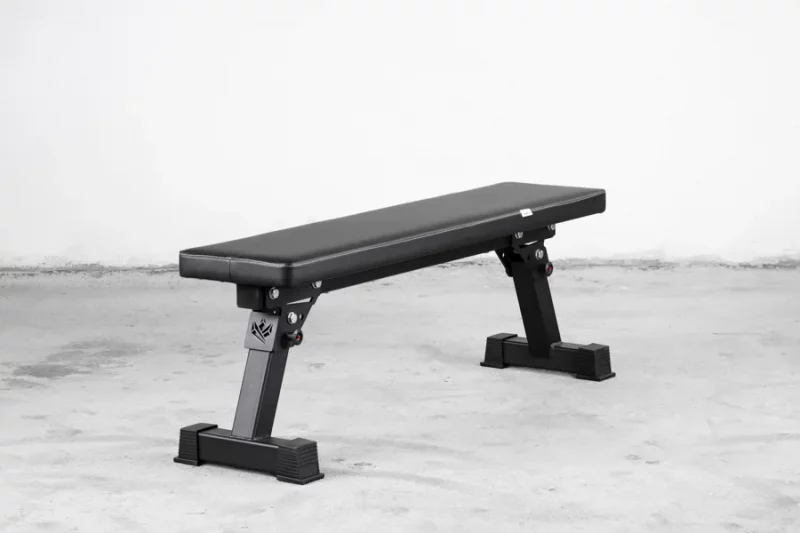The flat bench is one of the key exercises of today’s gym. It is the movement of excellence to increase the performance and muscle tone of the upper body, especially the pectoralis area.
In the collective imagination it is considered one of the most fascinating movements for the force needed to perform it. However, not everyone knows of the fascinating story that led the flat bench to boast such a level of fame. In this article we want to take you on a journey through the eras that marked the birth, the technological modernization – and finally the consecration of the flat bench in the Olympus of fitness.
Indice dei contenuti
Bodybuilding of the 19th century
Our journey begins at the end of the nineteenth century, these are the years when bodybuilding was born, the years of discovery and innovation. We are in an era in which the resources for cast iron enthusiasts are few, so you work fantasy.
The pioneers of lifting, including George Hackenshmidt, begin to perform a lifting that consists in placing supine on the ground with arms stretched over the head while holding the barbell, this rolls up to the chest and from there you do the lifting.
This movement, dubbed as pullover and press, is the ancestor of the modern flat bench. The structural and execution differences are glaring, the lack of the bench and the pullover movement that today consists of an exercise in itself, which make the execution much more challenging and left little room for cheating.

*Images courtesy of Wikipedia
Spreading or not spreading: this is the dilemma
A few years after its invention we are already beginning to see differences in execution. George Lurich is one of the first to use a “spanking” technique to perform the lift. This consisted in helping the weight rise through the push given by the lifting of the pelvis from the ground and allowed athletes to raise the loads sharply. This technique remained in use until the 1920s and 1930s. Of course, criticism did not take long. From the lifting purists the use of the pelvis was an abomination because it did not allow to quantify the true strength of the athlete. Only in the 1920s did the standardization of lifting techniques begin due to the Olympic Games. Leading the lifting reform is Bob Hoffman, guru of the USA team of Olympic weightlifting (and not only) and renowned opponent of the use of spangles. In America in the late 1930s, thanks to Hoffman’s influence, the AAU (American athletic union) made it illegal to use the technique in official competitions. In Europe it will continue to be used for several years.
Approaching the Second World War we begin to notice the use of supports to lift the weight and of rudimentary benches, but we should wait for the post-war period to see a relevant use.

*Images courtesy of Wikipedia
The second post-war
In the 50s of the 20th century, innovations were introduced that forever changed the fate of this lift. We moved from the floor to the use of bench and blocks to lift the weight. Technological evolution made the movement more accessible to those who frequented the and makes it possible to load much more. At a technical level the introduction of the bench offers the possibility of isolating the chest muscles, thus bringing those who practice bodybuilding closer to the movement.
In the space of only twenty years, the bench press enters the programs of many powerlifters and bodybuilders who, according to many coaches including Hoffman, become obsessed. The use of new structures to support the weight makes the individual training possible, without the need for a spotter to load and pass the barbell to the athlete.
The use of the bench will not be relegated to flat bench exercises but, since the late ’50s will be marketed the reclining benches that we see today in all commercial gyms.
In addition to bodybuilders, the popularity of the flat bench also reaches the powerlifters who in the same years decided to establish the first official competitions that also included a challenge that had as a protagonist the flat bench.
The ’50s is therefore the decade in which we pass from pullover and press to the real bench press on a flat bench of which we are all aware. But the innovations do not end here, The flat bench still has a long way to go to finish the climb at the peak of fame.

*Images courtesy of Wikipedia
The mainstream culture
In 1972 the international powerlifting federation was founded, the year after John Inzer presented his bench lifting suit, which has become very popular over the years thanks to its weight support properties.
In the 80s we have the consecration of the flat bench and its definitive entry into the collective imagination thanks to the American media. In sports such as American football and WWE the flat bench now has a symbolic place of honor. It is common for aspiring players to football challenge you to who can raise 225 lb (about 102 kg) for as many repetitions as possible. On the other hand we will all remember during a legendary Royal Rumble where Dino Bravo tried to raise 300 kg in the ring.
This concludes our journey through the history of the bench and its most important moments.
Kingsbox benches
Here is our proposal of flat benches, perfect for every budget and for whatever your goal.
kingsbox flat bench

The kingsbox flat bench is our base bench, made entirely of steel is compact and durable, exactly what we are all looking for in a good flat bench, you can find it at this link.
Mighty flat bench press

The mighty flat bench is built with in mind the continued use of CrossFit boxes and powerlifting, is composed of 8cm profiles that make it even more durable and stable, perfect for reaching your potential. you can find this bench press at this link.
Folding flat bench

The folding bench is a great choice if we have little space in our home gym, designed with the Kingsbox Closet in mind it keeps all the strength and durability of our benches, with the added advantage of saving space. You can find our folding bench at this link.
Conclusions
We hope this article has been interesting and we hope to leave you with a renewed curiosity in the tools you use every day in the gym. Thank you and the next article.







